The Importance of the New Forest, Southern England
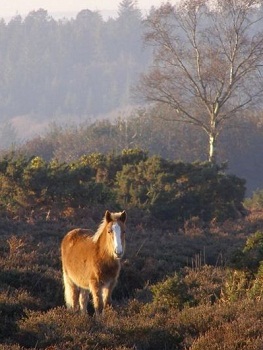
The New Forest - Important for Conservation of Flora and Fauna
The New Forest, in Hampshire, Southern England, is the largest tract of lowland common land in Britain making it of great importance for the environment and conservation as it covers a range of habitats from boggy valley bottoms to dry heathland.
Due to its long history and in spite of its name, the New Forest, has a large area of heathland as well as ancient mixed forest including oaks and other native species and more recent plantations of trees managed by the Forestry Commission.
Map of the New Forest, Hampshire, England, UK
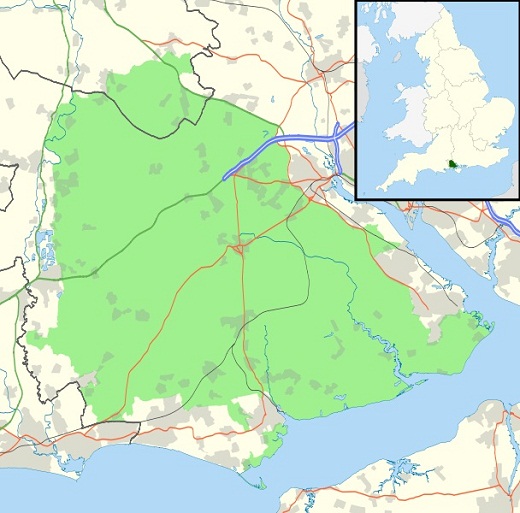
The New Forest's Vital Statistics
- The New Forest National Park cover 219 square miles (or 56,651 hectares).
- Approximately 30,000 people live in the New Forest National Park, making it the most densely populated National Park in the country.
- Calculating visitors is difficult but it is estimated that there are 10.5 million people who visit for just the day while 3 million visit for holidays (vacations).
- There are approximately 6,500 animals using the right to pasturage, ie grazing in the New Forest. These are ponies, donkeys, cattle and pigs.
- About half of the National Park is forested, about 23,500 hectares (one hectare is about 2.47 acres) and, of this, approximately 10,000 hectares are ancient, well-established trees rather than plantations.
- The New Forest contains the highest concentration of very old trees in Europe.
A Vital Valley Bog
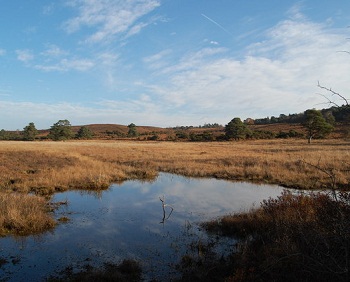
Conservation & Ecology in the New Forest - Contains Rare and Endangered Lowland Habitats
The New Forest has been widely recognised as a national heritage worthy of conservation. It is the largest tract of lowland unsown land in the country and it contains several kinds of lowland habitat rare or endangered elsewhere. These include
- valley bogs
- wet heaths
- deciduous woodland
The value of the New Forest to conservation and science is its size and continuity of habitats. Also Common Rights have prevented modern farming methods being used and so changing the ecology.
Heathland
This is threatened and becoming increasingly rare throughout Europe. Its rarity is due to the expansion of towns, agricultural reclamation and afforestation. It is also threatened by recreation which can destroy its usefulness as a habitat. The survival of the Forest's heathland is a consequence of the traditional pastoral economy and its past status as a Royal Forest which prevented wholesale enclosure.
The size of the heathland in the the Forest is seen as the best guarantee of survival of many rare and endangered species. It can support a larger population than in other more fragmented areas and this alone increases the chances of species survival. The size also means that a catastophic event like a fire is less likely to destroy the whole habitat and thereby the whole population of a species.
Valley bogs
These are an important habitat found in the New Forest. In other areas these have been drained or damaged by agricultural chemicals. They provide graded environments from the wettest areas to dry heathland and therefore form an almost complete ecosystem. The undamaged nature of these has given rise to considerable diversity of species of flora.
New Forest Woodland
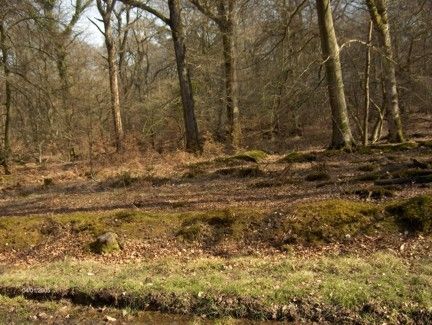
The New Forest's Management Over Centuries
A Continuous Range of Habitats Make it Valuable
Parts of the New Forest woodland are thought to be a survival of the original 'wildwood' covering most of Britain after the last Ice Age. All the woodland outside the modern enclosures are a result of medieval woodland grazing. Because of the ancient nature of the woodland, the diversity of flora and fauna is considerably greater than in more recently established woodland.
In Britain ancient woodland is under threat. Since the end of the Second World War, about half of what remained in 1945 has now gone. Even the fact that dead trees are left where they fall is important to conservation of species of birds, insects and lichens.
Whilst these habitats are important individually, they must be considered as part of the whole. The margins of the different types of habitats are important for many species, and the continuity is valuable for those that require more than one type of habitat.
It is therefore as a continuous area of habitats which merge into each other that the New Forest is so important to conservation. It is this that must be protected from piecemeal development and fragmentation because it is feared that each small encroachment will gradually diminish the Forest's importance and ability to sustain such a rich and diverse variety of species."
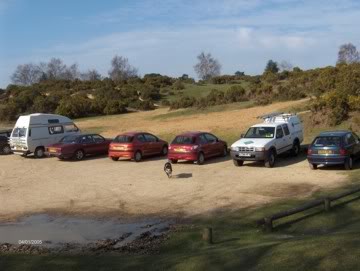
Authorised Car Parks in the New Forest.
Parking is not generally allowed on any of the roads in the New Forest and you will find rocks or logs along the verges to prevent cars pulling off the road and parking. This protects the verges from damage and helps to protect the animals too.
Instead, there are many car parks throughout the New Forest and most are set in delightful scenery, some with streams nearby. All give easy access for walks in the Forest.
Official New Forest Video
Follow the Country Code - Obey the Rules
Surprising to many people, there are very few rights of way in the New Forest. Instead there is a general permission that allows people to access most areas. Just as in other places, visitors should obey the country code:
- Shut gates
- Don't feed grazing animals, particularly do not stop on the roads to feed them - many are killed by cars each year.
- Don't approach grazing animals - they are usually fine if you keep your distance but may become aggressive if you get too close.
- When driving, keep your speed below 40mph because of the danger of animals on the road.
- You can cycle in the New Forest but keep to designated cycleways - cycling does cause damage!
- Stay out of areas where the signs forbid entry.
- Don't light fires except in designated barbecue areas and make sure cigarettes are extinguished completely.
- In dry summers, the Forest often burns and large areas can be affected. Although the aftermath of these fires can look terrible, it is surprising how quickly the Forest regenerates. Even so, don't let it be your fire or carelessly discarded cigarette that causes a large scale fire.
- Use litter bins or take litter home with you.
- Keep dogs under control especially near animals.
- Only park in authorised carparks.
- Camping is only permitted in authorised campsites.
Things to Do and See in the New Forest
New Forest Heathland and Forest
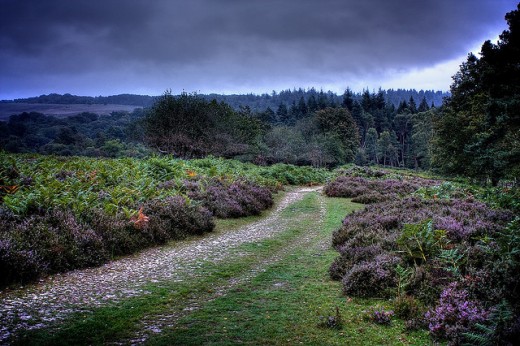
The History of the New Forest - From the Norman Invasion to the 16th Century
It is thought that areas of the New Forest were originally part of the primeval forest that once covered much of Britain after the last Ice Age. Evidence indicates that Saxon and Danish kings used it for hunting but it is certain that after the Norman Conquest it was given the status of an official forest.
At that time, a forest was a large area of land, not necessarily wooded, in which the animals were protected by a special law, ie Forest Law, aimed at preserving game. The Domesday Book says of the New Forest "...that by 1086 William I [the Conqueror] had imposed Forest Law over his own land and that of other owners in the area." Because of this, private lands could no longer be enclosed and farmed. Instead they were turned over to grazing and taxation was reduced in exchange.
Special courts upheld Forest Law. This is the origin of the Court of the Verderers which is still in existence and based in Lyndhurst. Hunting in royal forests was the sole prerogative of the king and his licensees. There were severe penalties for poaching: the Anglo Saxon Chronicles says "...whoever killed a hart or hind should be blinded". By 1217 these harsh penalties were softened by the Charta de Foresta and fines were imposed instead. Trees were also protected but there were common rights to firewood and windblown trees.
By the beginning of the 16th century, the New Forest was no longer so important for hunting by the monarch and Forest Law was imposed as a revenue gathering exercise rather than to protect animals and trees. The Forest's oak trees were now important for ship building and by the 17th century, oak plantations were established to replace the ones being felled.
A Track Through the New Forest
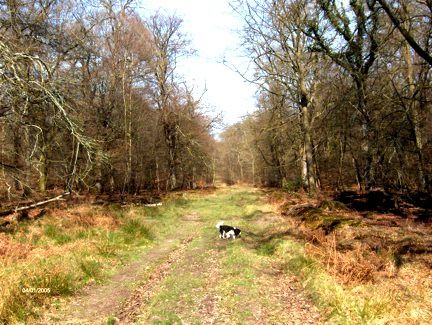
New Forest National Park
- The New Forest National Park Website
A complete Visitor Guide to the New Forest National Park. Discover its heritage, wildlife, conservation and attractions, and learn about life in the New Forest!
More New Forest History - Up to the end of the 19th century
By the beginning of the 18th century, the Court of Verderers had declined in importance and most authority was vested in the Office of Woods, responsible for timber production and answerable to the Treasury.
More Grazing Pasture in Exchange for Enclosures
In the mid 19th century, the Commoners (people entitled to Common Rights - see below) petitioned for the removal of deer so that more pasture would be available for grazing their stock.
An Act was passed allowing this but, in exchange, the government wanted to enclose 10,000 acres in addition to the 6,000 acres of enclosures already allowed under previous Acts. Opposition turned these into rolling enclosures rather than permanent ones, ie when trees had grown sufficiently to withstand grazing animals, the enclosures would be removed.
The New Forest Under Threat of Deforestation
Disputes between the Office of Woods and Commoners over enclosures continued unabated until the whole matter was referred to a Committee of the House of Lords.
They decided that there was no solution to the arguments that had continued since time immemorial and the answer was to deforest the area and partition up the forest. Compensation would be paid to landowners but tenant farmers would get nothing.
Fortunately, the London to Dorchester railway had opened up the New Forest to visitors and this decision caused a public outcry enabling a Mr Fawcett to get a Bill through Parliament forbidding any further enclosure or planting until the whole question was re-examined.
The New Railways Save the Forest
In 1877 the New Forest Act was passed upholding the rights of Commoners and enforcing the rule that no more than 16,000 acres was to be enclosed at any one time.
Additionally, it reconstituted the Court of the Verderers and gave it the power to make by-laws and levy fees on Commoners for grazing their animals.
The Act also made provision to preserve the unenclosed woods, so laying the foundation for further Acts of Parliament on the subject. Further disputes occurred and changes have been made but the 1877 New Forest Act preserved and protected the Forest.
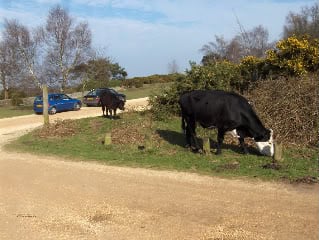
Common Rights in the New Forest
Most people who know anything about the New Forest will know about the ponies freely grazing there.
The right to graze animals is one of the Common Rights under ancient forest law.
These rights attach to property in the forest so anybody living in a house that has Common Rights attached, gets these rights automatically and they apply equally to property owners and tenants.
The rights are:
Turbary - the right to cut turf or peat from the heath for fuel. There were specific rules governing the size and way it was cut.
Pannage or Mast - the right to turn out pigs between 25th September and 22nd November each year to feed on acorns and beechnuts. Not only did this fatten pigs for Christmas, it also prevented ponies and cattle gorging on acorns which could cause inflammation and death.
Estover - the right to bundles (called cords) of wood 8ft long by 4ft deep x 4ft high.
Common Pasture - the best known of the Common Rights, which is to turn out ponies, cattle and donkeys to graze in the open forest.
Common or Marl - marl is a mixture of carbonate of lime and clay used as a compost to improve the acid forest soil.
Fern - this was the right to gather ferns after the 29th September when the sap was no longer in full flow so it could be gathered without killing the plants. It was used for litter for animals.
Nowadays, only the rights to Common Pasture and Mast are practised to any extent.
© 2008 Carol Fisher



